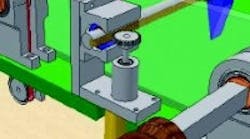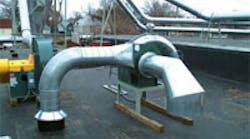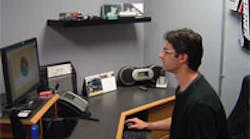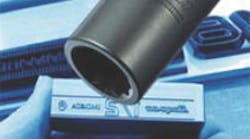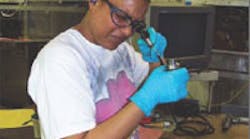Kevin Bowen used Auto CAD Inventor software to design his electronic foosball table.
If all goes according to plan for Kevin Bowen, a game of foosball won't require having two, three, four, or even any players. Bowen, along with other students in his senior-design-project team from Rice University (www.rice.edu) in Houston, designed and built what they believe is the world's first electronic, computer-controlled foosball table. The table allows one gamer to play against the table's computer or for the table to play against itself.
The electronic foosball table, called Foosbot, sports the same playing field dimensions, features and operations of a regular foosball table. All its workings are concealed, so as appearances go, Foosbot looks like any other regulation table.
Foosbot has blue and red player rods. Its computer controls the blue rods, while the red ones are human controlled. The table's computer initiates blue-rod movement off those of the red rods and ball position to allow one person to play against the computer.
DC servo motors power the two-part rods that slide back and forth and rotate. The servo motors connect to gear-and-rack assemblies for back-and-forth motion, while square rods and timing-belt-and-pulley systems provide rotation.
Because of time and budget constraints, Bowen's team actuated only half the table, but their ultimate goal is a fully actuated one. They envision players, at the start of a game, assigning any of the table's rods as either human or computer controlled. Designating all the rods as computer controlled means the table would play by itself.
Infrared lights, similar to those used in TV remote controls, sense ball motion on Foosbot. The lights run along two sides of the playing field and point to photo receptors on the two remaining opposite sides. This forms an X/Y grid delivering a 0.250-cm ball-location resolution. The grid tracks the ball better than humanly possible, says Bowen.
The team built Foosbot from the ground up, machining components such as rods, bearings and other mechanical assemblies. Because of the table's large playing-field size, the team farmed it out for CNC machining, but the shop doing the work could not read the team's design-file format.
Bowen redrew the table using AutoCAD Inventor software from Autodesk Inc. (www.autodesk.com). This 3D mechanical-design application integrates 2D drawing with 3D modeling to allow engineers such as Bowen to leverage their years of AutoCAD expertise and benefit from 3D modeling and functional-design capabilities. The software includes built-in data-management tools and allows for design-data sharing across engineering workgroups and to users outside design teams.
According to Bowen, the software's intuitive keyboard shortcuts speed his design process. "When I'm CADing, moving a mouse around wastes a great deal of time, so the more I can do through the keyboard, the faster I can design," he says.
When it comes to CAD, Bowen is self-taught, and says that Inventor's tutorials made learning fast. He went through them once the first time he used the software and immediately began designing. He was generating product within three weeks.
Bowen is currently in the process of redesigning Foosbot to beef up its structure, and using Inventor lets him check tolerances and make sure there are no interferences in the table's actuation system. He also plans to mount flat-panel displays above the playing field to create a mini jumbotron look.
